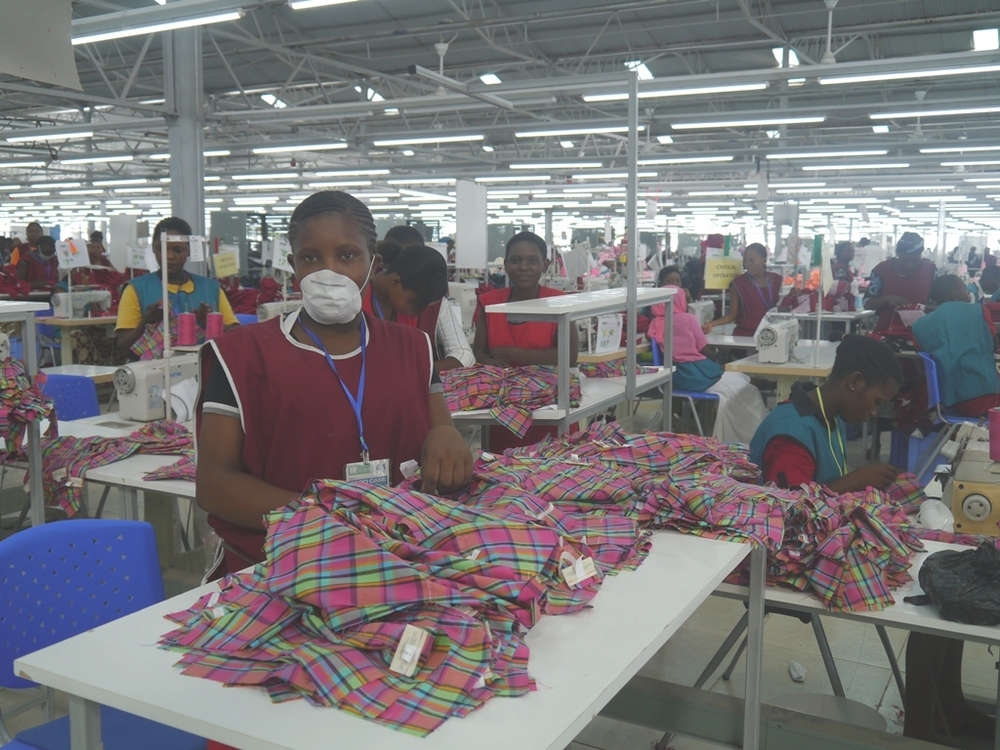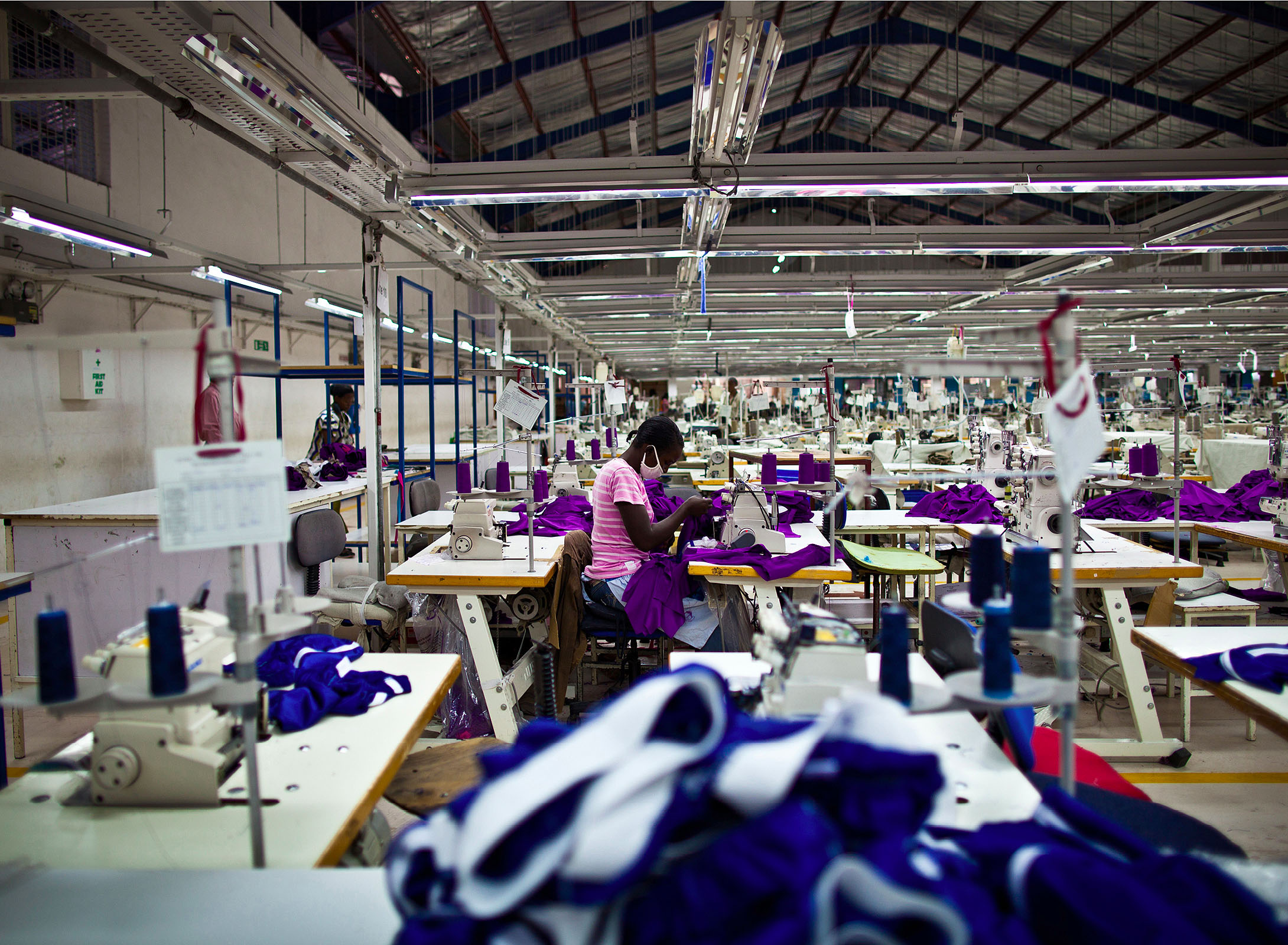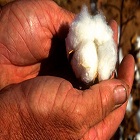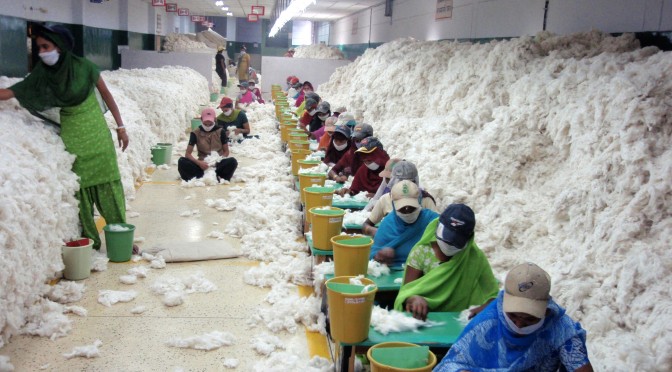FW
The depreciation of Chinese currency has alarmed Bangladesh's garment exporters. China devalued the yuan by about two per cent to support its exporters and increase economic growth. China is Bangladesh’s main competitor for apparel products in the European and US markets. But China has a 37.5 per cent share in the global apparel market while Bangladesh has a 4.85 per cent share.
Bangladesh feels the weakened yuan will give Chinese exporters competitive edge and allow them to sell their products cheaper. Since Chinese exporters get policy support from their government, Bangladesh exporters want the same from their government. Bangladesh exported goods worth $458.12 million to China in 2012-13 fiscal against imports worth $6.30 billion. Bangladesh’s export sector wants a special package to tide over difficulties. The nearly $32 billion export industry in July slumped 11.96 per cent from a year earlier.
While Chinese exporters are favored with a depreciated yuan, Bangladesh’s exporters have to face an appreciated Bangladesh currency against the euro. Exporters in Bangladesh want the government to lower petroleum prices in line with the plummeting oil prices in the international market and not shore up the country’s currency against the US dollar.
Bangladesh's garment exports to Japan rose 14.02 per cent in fiscal 2014-15 partly due to relaxed rules of origin for Bangladeshi knitwear. Knitwear exports in 2014-15 grew 10.43 per cent from the previous year. Relaxation in Japanese rules of origin means exporters will get duty-free access to Japan even if the items are made with imported fabric. Exports of woven garment rose 16.89 per cent.
Rules of origin are a set of conditions that determine the source of a product, and are important in determination of duties and restrictions that often vary according to each product's origin. Before the relaxed rules of origin, Bangladeshi knitwear exporters to Japan could only get duty-free access for items made with locally spun fabric. Bangladeshi exporters were already getting almost zero duty benefit on knitwear exports as local spinners met about 90 per cent of the sector's raw material requirements.
Bangladesh can benefit from Japanese market by promoting non-cotton garments, which have a higher demand in Japan. Since 2008, Japan has moved away from dependence on China. It has induced local retailers to look for other suppliers such as Bangladesh, Vietnam and Cambodia. Even now, Japan’s garment imports mainly come from China. Earlier, Bangladesh was relatively unknown to Japanese customers, but its visibility has increased significantly as Bangladesh opened up to Japan’s outsourcing needs.
Over the year, China will release some 4.6 million bales out of its own cotton reserves this year rather than rely on imports. This is bad news for Pakistan considering the importance of Chinese market for its cotton industry. Cotton and its related exports make up around 16 per cent of the country’s total exports as of financial year 2015. China is the largest market for Pakistan’s cotton exports accounting for about 38 per cent of Pakistan’s total cotton trade and six per cent of total exports.
For the fiscal year ended July 2015, cotton trade with China was down by 15 per cent year-on-year. Lackluster demand from China has often been cited as one of the several factors behind Pakistan’s weak textile industry. China is the world’s foremost consumer of cotton, with an annual consumption of some 34 million bales.
Not only has China been buying less from Pakistan, the cost of production in Pakistan is very high. So, Chinese buyers find prices too high. Moreover, China has recently devalued the yuan to improve exports and, conversely, reduce imports. So, with the yuan-rupee parity much lower than it was before, the year ahead might witness a further decline in Pakistan’s exports to China, not to mention a surge in imports coming in from China.
Coimbatore-based KPR Mill is looking at aggressive expansion with a focus on the garmenting sector. The company, since its inception in 1996, had an integrated facility with combined capacities in spinning, knitting, processing and garmenting. As of now KPR has 10 state-of-the-art production facilities at: Sathyamangalam, Neelambur, Arasur, Karumathampatti, Tirupur and Perundurai in Tamil Nadu. Over the ye ars, its spindleage has increased to 3.54 lakh spindles from 12,000 at the beginning. However, in the last year KPR has stopped expansion in the spinning space and started focusing on garmenting and knitting.
It expanded its Arasur garment facility, upgrading capacity by 10 million pieces with an outlay of Rs 25 crores last year. It also took up greenfield expansion of Thekkalur at an investment of Rs 75 crores and strengthened its garmenting capacity from 37 million pieces a year to 59 million.
The company has been exporting 30 per cent of its products to international markets. Europe is a major market, followed by the US and Australia. It would like to focus more on the US and other markets such as Brazil and Japan going forward. The total garmenting capacity has gone up from 37 million pieces a year to 59 million pieces. KPR also has a 93 MW of green energy of which 63 MW is from the windmills and 30 MW from co-gen, meeting 75 per cent of its power requirements.
KPR’ net profit was up 28 per cent at the end of the first quarter of the fiscal 2015-16 as against the corresponding quarter of the earlier year. Revenues shot up five per cent and garment turnover was up 19 per cent.
www.kprmilllimited.com/
Work attire continues to evolve over the past few decades and casual Fridays have turned into casual every day. Yet, retailers are cautioned by experts that this is not so much about dressing down as dressing comfortably.
Roseanne Morrison, Fashion Director, The Doneger Group says that there has been a big shift. Women wear rompers, short sets, dresses, and skater skirts, which are paired with sneakers. For Fall, they will pick darker, dressy denims. People will pick a flared leg that looks a bit sexier and dressier, so one can be dressy yet comfortable.
Thus, stores have to work harder to provide more khakis for men and dresses for women. Knowing the core customer helps, also the types of type of industries they work in and then provide assortments that reflect those preferences—however, comfort remains at the top.
Tom Julian, men’s Fashion Director, The Doneger Group, says that what used to be casual business has now evolved into ‘creative workplace’. He adds that from speaking to marketing firms and creative tech companies, the biggest change in workplace attire is self-individuality and comfort. Today, millennials do not want to change outfits from work to play to time out. Tailored separates have been accepted by young men and these can be seen in major stores and global chains, Julian states.
According to the ‘Monitor’ survey, while women, for long have been piecing together their wardrobes, the post-recession business environment inspired men to shun their khakis and golf shirts for tailored separates. Today, 66 per cent of both, men and women buy separate pieces from different stores, rather than buy an entire outfit from one place.
Target Corporation (TGT) Q2 sales increased by 2.8 per cent, driven by better-than-expected increase in comparable sales. Comparable sales in style (which includes the majority of the retailer’s apparel categories), baby, kids and wellness grew by more than 7 per cent in the quarter, three times faster than the company average.
Comparable sales was four to five per cent in both home and apparel categories, with apparel showing the strongest performance in baby, kids and women’s ready-to-wear. Digital channel sales grew by 30 per cent and contributed 0.6 percentage points to comparable sales growth. About 80 per cent of digital channel sales growth was driven by home and apparel. One of Target’s key strategic initiatives is to become a leader in digital, since it plays such a major role in driving store traffic.
Gross margin rose by 50 basis points to 30.9 per cent of revenue, reflecting heightened promotional markdowns in the second quarter of 2014 and a favorable merchandise mix in 2015. Net income increased by 221 per cent, up 20.6 per cent from the second quarter of 2014.
The company is pleased with the second quarter financial results, as traffic growth, strong sales in the signature categories and continued expense discipline drove better-than-expected profitability.
World cotton output in 2015-16 is forecast at 109 million bales, 2.5 million bales below last month's projection and 10 million bales below 2014-15. Global cotton area in 2015-16 is seven per cent below 2014-15. The 2015-16 production is projected below consumption and would be the smallest crop since 2009-10. For India, which is expected to be the largest producing country, cotton crop is projected at 29 million bales in 2015-16, about two per cent below last season’s 29.5 million bales. With a normal monsoon this season, a seven per cent reduction in area is partially offset by a higher yield expectation.
In China, production is forecast at 26 million bales in, four million bales below last season, with fewer incentives to plant cotton resulting in a reduced area of nearly 18 per cent in 2015-16.
Pakistan's crop is forecast is at 10.2 million bales, nearly four per cent below 2014-15, while area is expected to rise two per cent, with reduction in yield, reducing Pakistan’s production by 400,000 bales in 2015-16. Brazil’s crop is forecasted to remain the same in 2015-16 at seven million bales, as area and yield are projected to equal that of 2014-15. However, India’s exports in 2015-16 are expected to expand significantly.


Among the CPOs, Ethiopia emerged as the most sought after nation and turned out to be the most attractive for international buyers of apparels. Out of the 40 CPOs, 13 said they would start sourcing from Kenya, five said they would increase the value of apparels they sourced from Kenya. Another 28 said they would start sourcing from Ethiopia and eight said they would increase the value of apparel sourced from there.
East Africa emerges strong
The survey ‘East Africa: The Next Hub for Apparel Sourcing’, shows Ethiopia has cost advantages, whereas Kenya has higher production efficiency. Mauritius is third, and 13 respondents said that they would start sourcing apparels from there, while another three said they would increase their value of apparels. Lesotho, Madagascar, Uganda, Tanzania, Botswana, Egypt, South Africa and Swaziland were the other African countries that are emerging.
At present, Kenya’s apparel industry specialises in supplying high volume bulk basics such as trousers, as per the report. Almost 92 per cent of Kenya’s apparel exports went to the US in 2013. Over $400 million worth of apparels that includes jeans and towels consumed in the US are manufactured in Kenya’s Export Processing Zone (EPZ), at present. According to Adan Mohamed, the Industrialisation Cabinet Secretary, this is projected to many fold. Also, in recent years, due to foreign direct investments from Asia and Middle East as well as support from the EPZ developed by the Kenyan government, the capacity of Kenya’s garment factories has grown.
Future goals for the sector
The revival of textile and leather industries is one of Jubilee government’s price focus. This will be help take advantage of Agoa and global markets. The government intends to invest in industrial and enterprise skills to sustain these industries. Besides, they would be initiating a targeted approach to identify potential international investors for these priority industries.
With economic liberalisation in 1990, there was an influx of textile goods in country. Also, the average capacity utilisation in textile mills went down by almost 50 per cent. Once the fifth largest forex earner, the textile sector’s contribution to GDP dropped. Agoa Act though, offered government support and several prospects, which helped the industry. According to the McKinsey report, if they wish to attract international buyers, both Kenya and Ethiopia have to address compliance and risk issues. And as the CPOs surveyed pointed out, Kenya needs to address corruption, high crime rates and social compliance.

Global cotton prices have fallen over the past months however, NY Futures sharply reversed after the release of this month's USDA report. Prices for the most actively traded December futures declined slowly but steadily throughout the month of July. In August, prices broke out of the range between 63 and 68 cents/lb for the first time since mid-March by falling through support near 63 cents/lb. However, following the release of this month's USDA report, which featured large downward revisions to figures for US production and ending stocks in 2015/16, prices rebounded from levels near 62 cents/lb back to those near 65 cents/lb.
USDA report indicates price recovery

The A Index followed NY futures lower throughout July and August and dropped to values below 70 cents/lb for the first time since April. The Chinese government facilitated the largest percentage decrease in the value of the RMB relative to the US dollar since 1994 early this week. The shift in the exchange rate lowered the value of the CC Index in dollar terms slightly from 96 to 93 cents/lb. In local terms, the CC Index has been steady at values near 13,150 RMB/ton.
Indian spot prices for the Shankar-6 variety moved marginally lower over the past month. In international terms, values declined from 69 to 67 cents/lb. In local terms, prices declined from Rs 34,400 and Rs 33,700 per candy. Pakistani spot prices also decreased slightly. In international terms, values fell from 56 cents/lb to 53 cents/lb. In local terms, prices decreased from Pakistani Rs 4,700 to 4,500 per maund.
Price outlook for 2015/16
The response by NY futures to the latest USDA release was likely driven by the substantial changes made to figures related to the US. It is not uncommon for there to be large revisions to US production estimates in reports released in August. This is because there is a change in methodology used by the USDA between the July and August releases.
From May, when the first complete estimates for upcoming crop year are released, to July, the USDA relies on commodity analysts and statisticians to develop forecasts. In August, and throughout the harvest period, data gathered from field surveys conducted by observers across the cotton belt are used to generate yield and production forecasts. This year, due to heavy rainfall in many cotton growing states, there was considerable uncertainty related to acreage planted, abandonment, and yield. As a result, the change in methods could have been expected to result in important revisions to existing estimates.
This month, the US planted acreage number was lowered 100,000 acres nationally from 9 to 8.9 million. Abandonment, which refers to acreage planted but not harvested due to poor crop conditions, was increased from 500,000 acres to 1.0 million acres. The national yield forecast was lowered 27 lbs/acre (3 per cent). In combination, these changes generated the 1.4 million bale (10 per cent) decrease in US harvest expectations this month.
Accompanying the reduction to the US harvest estimate were changes to US export numbers and ending stocks. A 200,000 bale increase from 11.0 to 11.2 million to the 2014/15 export figure contributed to a 500,000 bale reduction to 2014/15 stocks. For 2015/16, the US export estimate was lowered 800,000 bales, from 10.8 to 10.0 million and was a result of the smaller production number. The implied tightness in US supplies could emerge as a factor supportive of prices in 2015/16.
The China Keqiao International Textile Expo 2015 (Autumn) is scheduled to take place from October 16-19, 2015 at the China Textile City International Convention & Exhibition Center in Keqiao district, Shaoxing city, Zhejiang province. The exhibition area will spread over 34,000 sq. mt. and the expo will feature 1,400 international stands. The expo is very popular and though more than 90 per cent of the stands were booked, many textile enterprises are still looking to register.
The reason for the expo’s popularity, is that since its foundation, the Keqiao Textile Expo has stood out from fabric shows everywhere in the country. The expo has become one of the top three along with the Shanghai Fabric Show and Fabric Show in Canton Fair.
The show works as a meeting ground for exhibitors and companies looking to source. Also, the solid industry chain and improved industry base works as a strong support for the expo, say experts. Moreover, they feel it has some advantages over the Fabric Show in Canton Fair and Shanghai Fabric Show. The Keqiao Textile Expo’s outstanding feature is the textile cluster production area, with convenience for follow-up visit and cooperation.












